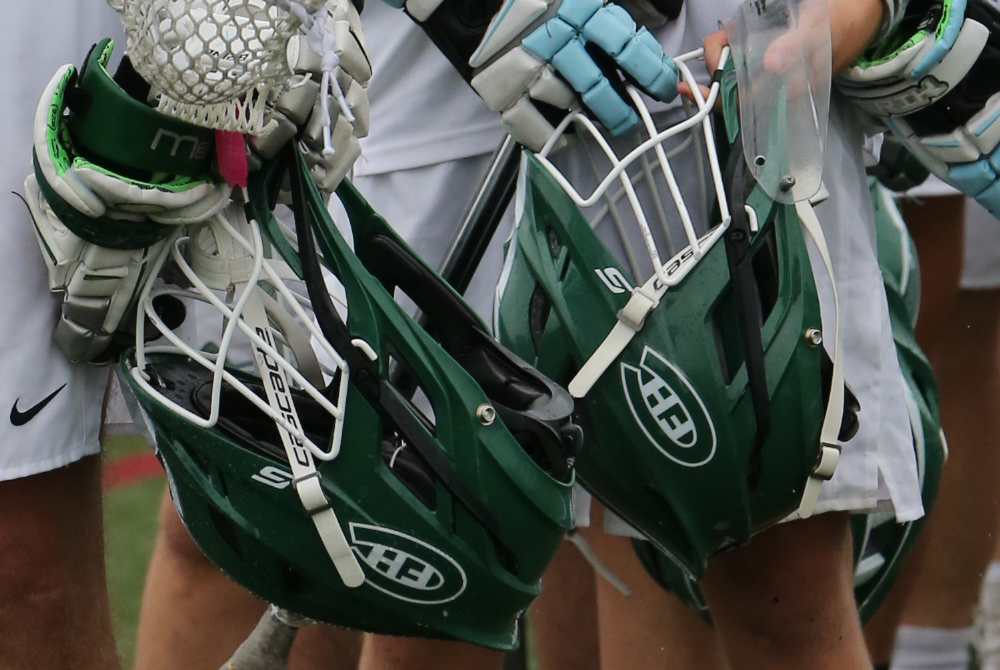
Be the Referee: Use of the Monitor
March 29, 2016
This week, MHSAA assistant director Mark Uyl discusses when instant replay can be used for basketball at the high school level.
Be The Referee is a series of short messages designed to help educate people on the rules of different sports, to help them better understand the art of officiating, and to recruit officials.
Below is this week's segment - Use of the Monitor - Listen
The use of instant replay is a conversation and debate that’s taking place in all levels of sport, all across the board. One thing I’ve noticed when fans are talking about college basketball is the frustration over seeing more and more times in the college game the officials going to the monitor to check a situation late in a game.
At the high school level, the monitor can only be used at the Semifinal and Final levels of the girls and boys tournament. The monitor then can only be used at the end of a fourth quarter or overtime to determine if a shot was released in time, and if that shot was a two-point basket or a three-point basket with a potential shooter’s foot being on the line.
Past editions:
March 17: Block/Charge - Listen
March 10: Ball Stuck on the Rim - Listen
March 3: Three Seconds - Listen
Feb. 25: Deciding the Game - Listen
Feb. 18 : Cheer Safety - Listen
Feb. 11: Primary Areas - Listen
Feb. 4: Block/Charge Calls - Listen
Jan. 28: Dive on the Floor - Listen
Jan. 21: Hockey Officials' Options - Listen
Jan. 14: Recruiting Officials - Listen
Jan. 7: Wrestling Weight Monitoring - Listen
Dec. 31: Respect for Referees - Listen
Dec. 24: Basketball Instant Replay - Listen
Dec. 17: Basketball Communication - Listen
Dec. 10: Basketball Excessive Contact - Listen
Nov. 26: Pregame Communication - Listen
Nov. 19: Trick Plays - Listen
Nov. 12: 7-Person Football Mechanics - Listen
Nov. 5: Make the Call: Personal Fouls - Listen
Oct. 29: Officials Demographics - Listen
Oct. 15: Make the Call: Intentional Grounding - Listen
Oct. 8: Playoff Selection - Listen
Oct. 1: Kick Returns - Listen
Sept. 24: Concussions - Listen
Sept. 17: Automatic First Downs - Listen
Sept. 10: Correcting a Down - Listen
Sept 3: Spearing - Listen
Aug. 27: Missed Field Goal - Listen

Be the Referee: Boys Lacrosse Helmets
By
Paige Winne
MHSAA Marketing & Social Media Coordinator
April 30, 2024
Be The Referee is a series of short messages designed to help educate people on the rules of different sports, to help them better understand the art of officiating, and to recruit officials.
Below is this week's segment – Boys Lacrosse Helmets - Listen
We’re talking helmets in boys lacrosse today – and what happens when one comes off during play.
The high school rule differs from the college rule—in high school play, a helmet coming off during normal play is not a foul. If that happens, play is stopped, the player who lost his helmet must come off the field, and the team with possession maintains possession. If the ball is loose, alternate possession is used. The player can return at the next dead ball after play has resumed. In college lacrosse, this would be a technical foul.
When a helmet is knocked off (in high school) as a result of a foul, the helmetless player must leave the field until the next dead ball, and the foul will be administered.
Previous Editions
April 23: Softball Interference - Listen
April 16: Soccer Red Card - Listen
April 9: Batted Baseball Hits Runner - Listen
March 12: Basketball Replay - Listen
March 5: Hockey Officials - Listen
Feb. 27: Less Than 5 - Listen
Feb. 20: Air Ball - Listen
Feb. 13: Hockey Penalties - Listen
Jan. 30: Wrestling Tiebreakers - Listen
Jan. 23: Wrestling Technology - Listen
Jan. 9: 3 Seconds - Listen
Dec. 19: Unsuspecting Hockey Hits - Listen
Dec. 12: No More One-And-Ones - Listen
Nov. 21: Football Finals Replay - Listen
Nov. 14: Volleyball Unplayable Areas - Listen
Nov. 7: Pass/Kick Off Crossbar - Listen
Oct. 31: Cross Country Interference - Listen
Oct. 24: Soccer Overtime - Listen
Oct. 17: Tennis Spin - Listen
Oct. 10: Blocked Kick - Listen
Oct. 3: Volleyball Double & Lift - Listen
Sept. 26: Registration Process - Listen
Sept. 20: Animal Interference - Listen
Sept. 13: Feet Rule on Soccer Throw-In - Listen
Sept. 6: Volleyball Jewelry - Listen
Aug. 30: Football Rules Similarities - Listen
Aug. 23: Football Rules Differences - Listen

